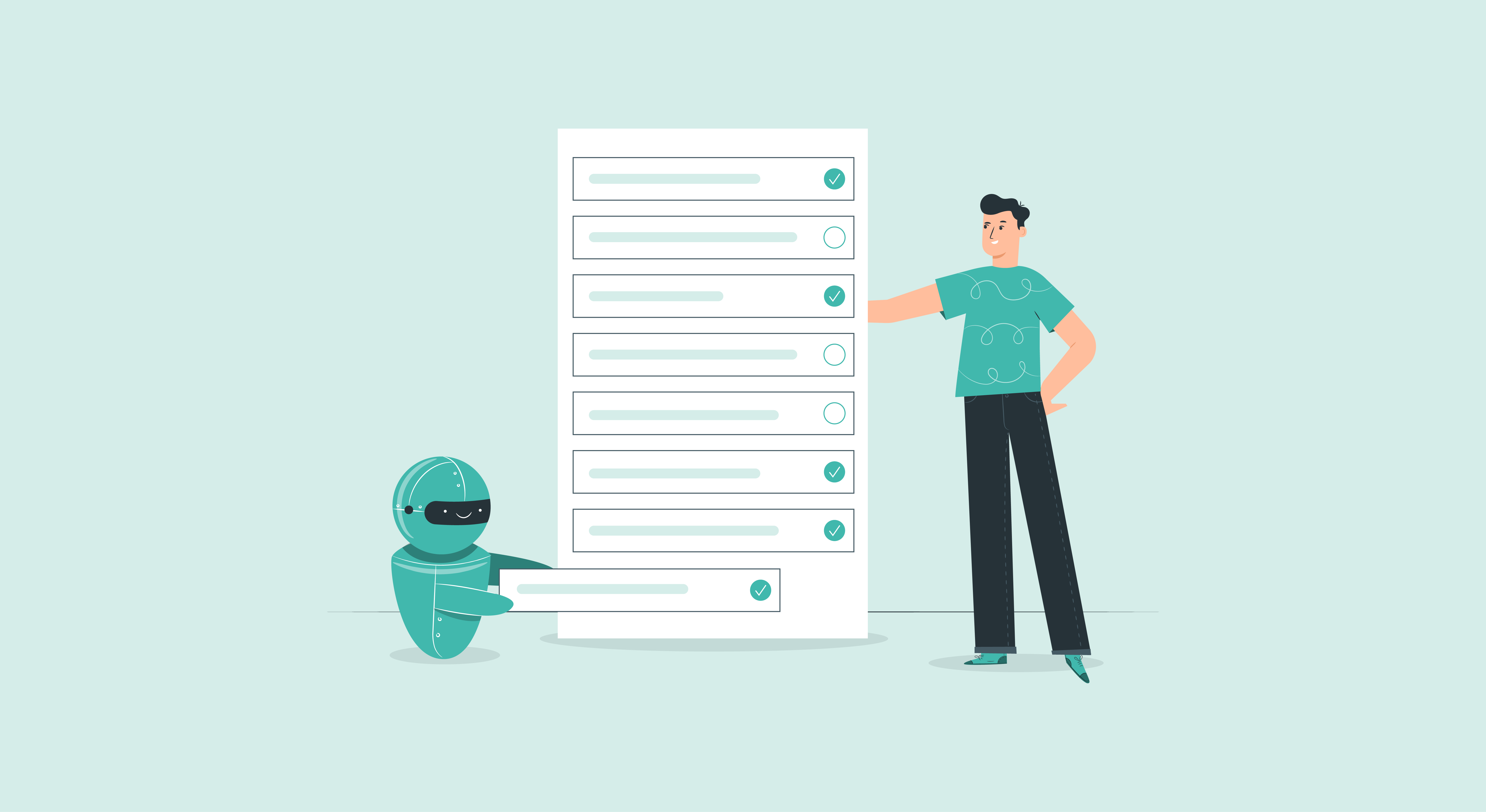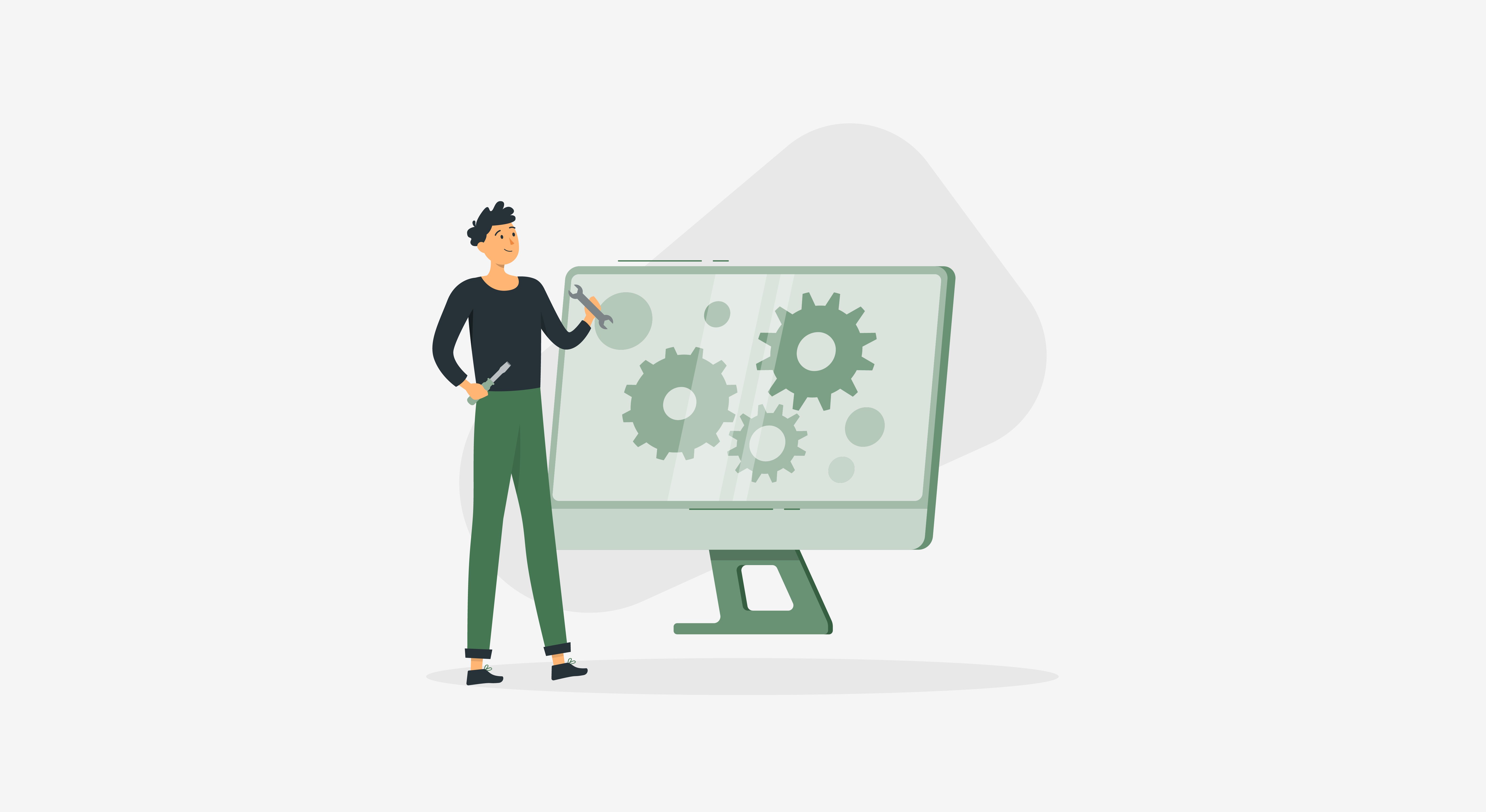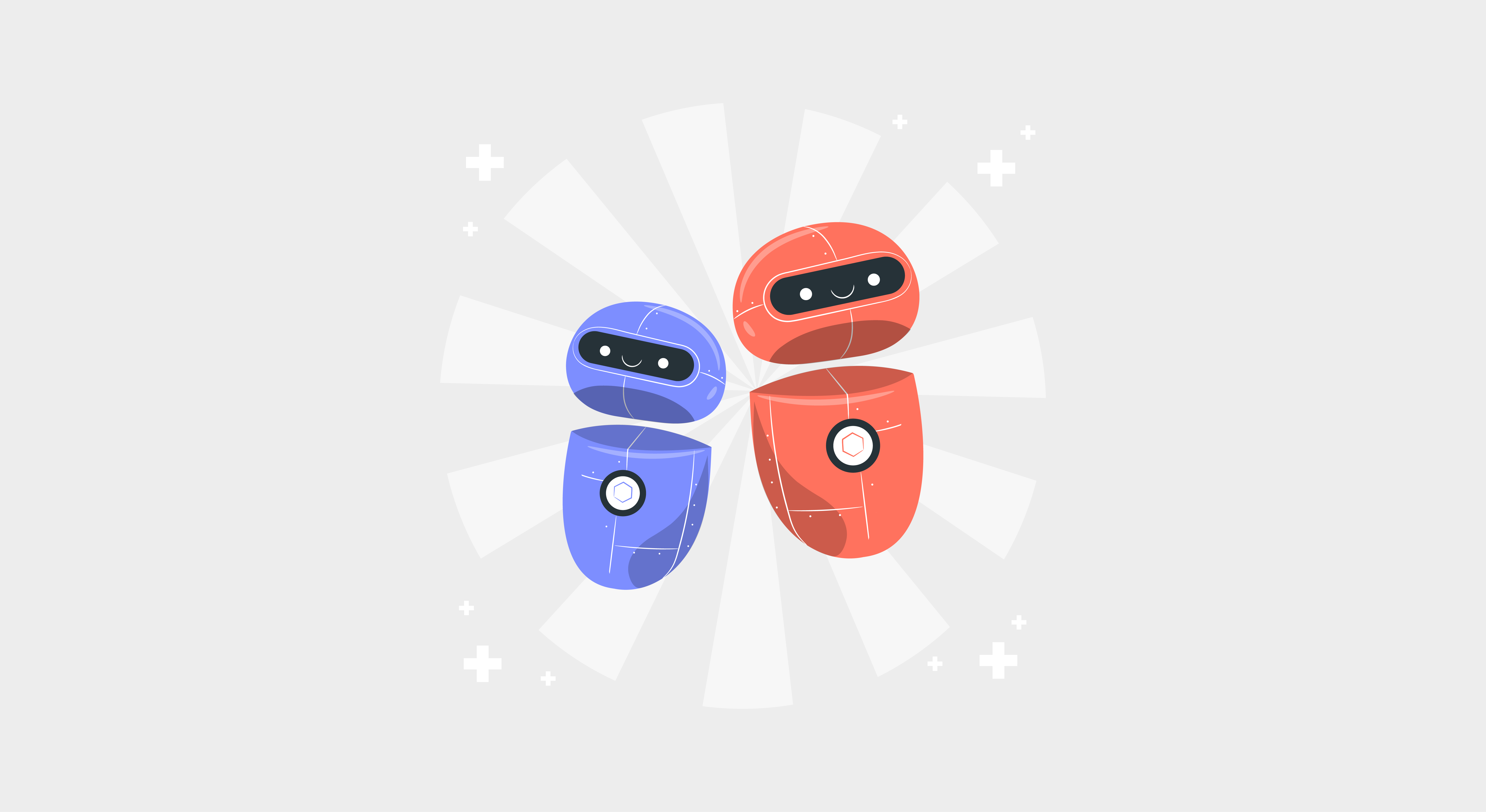Chatbots have changed the way businesses support and sell to their customers. These virtual assistants have provided companies across the globe with much-needed relief by delivering answers faster, reducing repetitive customer service tasks, and much more.

With chatbot technology becoming more accessible and affordable, enterprises are automating their customer support, sales, e-commerce processes by streamlining interactions between people and services. The goal of this blog is to provide insight into common chatbot-related terminology.
List Box
- Chatbot
- Artificial Intelligence
- Machine Learning
- Natural Language Processing
- Decision Tree
- Conversational UI
- Conversational Landing Pages
- Help Desk
- Live Chat
- Chatbot Widget
- Human Handover
- Customer/User Intent
- Training
- Knowledge Base
- Bot says / Response
- Quick Replies
- FAQs / Answer Bot
- Lead Generation Bot
- E-Commerce Bot
- Bot Builder
1. Chatbot
A chatbot is a software program that simulates a human-like conversation to converse with channel visitors looking for support while sifting through chunks of data. As discussed later in the blog, chatbots can broadly be divided into Rule-based chatbots and NLP-based chatbots. These virtual assistants have gained popularity over the past few years because of their ability to provide uninterrupted service and faster response, boosting agent productivity and customer experience.
2. Artificial Intelligence
Artificial intelligence is a wide-ranging term used to describe the science of building smart machines capable of performing tasks that typically require human intelligence. In Chatbot technology, AI enables a bot to understand and interactively answer complex queries, simulating human intelligence to think like humans and mimic their actions. Using AI, the intelligent chatbot analyzes the user’s input to identify the intent and respond with relevant information.
3. Machine Learning
A part of Artificial Intelligence, Machine Learning refers to the ability of a chatbot to learn and evolve from the user inputs and past chat conversations using natural human language. Using machine learning algorithms, an AI chatbot receives information consistently, and over time, it’s “trained” to understand the context to provide more accurate results to the user.
4. Natural Language Processing
Natural Language Processing (NLP) is an area of computer science that aims to read, decipher, understand, and make sense of how machines interact with humans. Natural language understanding entails processing and analysis of large amounts of natural language data, allowing machines to understand how humans speak. NLP works off intents and responses over a myriad of chatbot conversations to correctly identify the answer to the query posed by the chatbot users.
5. Decision Tree
A Decision tree is a powerful tool used to visually and explicitly represent decisions and decision making. Decision tree chatbots are used to simulate a conversation with a chatbot user using rules and a flow. A Design Tree-based chatbot uses a series of predefined rules to drive visitor conversation, offering them a conditional if/then at each step.

6. Conversational UI
Conversational User Interface (CUI) is an interface that allows the interaction between humans and computers. A chatbot is a great example of a CUI where software acts as a user interface to mimic chatting with a real human.
7. Conversational Landing Pages
Conversational landing pages are website pages that engage visitors through a chatbot-driven interaction. These landing pages are meant to welcome visitors, initiate and conduct conversations, and recommend certain actions such as answering visitor inquiries, sharing special offers and promos, collecting feedback, etc. The goal of the chatbot is to engage visitors in a way that’s beneficial to them and the business through an enhanced conversational experience.

8. Help Desk
A Help Desk or a Ticketing Software is a system that serves as a one-stop system for all incidents/issues, questions, requests across multiple communication channels – phone, email, chats, etc. When integrated with a chatbot software, businesses can choose to create tickets out of each chatbot conversation to track and manage customer queries.
9. Live Chat
Live Chat is a customer service software that allows consumers to interact with agents in real-time. Powerful tools such as HappyFox Chatbot allows chat users to escalate their issues to the live agents seamlessly. This allows customers to quickly and conveniently get answers to their questions on a website without having to be on the phone for hours.
10. Chatbot Widget
Chat Widget is the chatbot dialog box for interaction with website visitors. A little box that opens up when a visitor clicks on or is triggered by a rule, a chat widget allows website visitors to get instant and fast support.
11. Human Handover
Human Handover or a human takeover is the process of a human agent taking over a chat conversation from a chatbot. Oftentimes, website visitors like to escalate their issues to a human agent for resolution. Chatbot platforms like HappyFox Chatbots give companies the ability to seamlessly transfer the same conversation to a human. With the right permissions, a human agent can also add to an ongoing conversation to provide insight — also referred to as a “Barge In”.
12. Customer/User Intent
Within conversational AI, intent refers to the goal of visitors when help. An NLP-based chatbot application uses this intent to understand the motive of the chatbot user to engage in a meaningful conversation and provide relevant information.
13. Training
Training is the process of enabling the bot to answer questions better. This is done by making the bot predict what users might ask and use those examples of phrases to make the bot recognize patterns. While “training the bot”, intelligent terms and keywords are related to an “intent” that helps the HappyFox ML model to recognize the pattern and return the closest answers from the main repository.
14. Knowledge Base
Knowledge Base serves as a central repository of a published collection of frequently asked questions, how-to guides, and troubleshooting instructions. Used to promote self-service, a knowledge base serves as the main place from which an AI-based chatbot pulls answers to the questions
15. Bot says / Response
An answer by the chatbot to a user query is called a bot response. The AI bot can answer queries with a text answer, image, or another question to create perfect customer interactions.

16. Quick Replies
Quick Replies are predefined responses that chatbots offer to the users. These bubbled responses are offered when a chat conversation is initiated or in response to a quick reply selection earlier.
17. FAQs / Answer Bot
Answer Bot turns your Frequently Asked Questions (FAQs) into a conversational experience for your website visitors. These chatbots have found popularity in the customer service industry because of their ease of use as they help direct customers to the right answers at any time with reduced human intervention.
18. Lead Generation Bot
A lead generation bot is simply a chatbot used by companies to safely and securely collect names and email addresses in your CRM or similar system. This collected information of potential customers and prospects is valuable in the qualifying leads faster and more efficiently to increase sales. In addition, the lead gen bot can also connect buyers to the right salesperson through a dedicated messaging channel. This information also finds a lot of value in marketing campaigns and to propose the right product and services to the right audience.
19. E-Commerce Bot
An E-Commerce chatbot is another type of chatbot that helps online retailers engage with their users effectively across the complete buying journey. These virtual agents solve customer queries and enable customers to buy better products, but they also empower organizations to upsell and cross-sell better and reduce abandonment rates.
20. Bot builder
A chatbot builder is software for businesses to design, develop, and deploy interactive and conversational chatbot workflows to serve their customers and provide them with faster resolutions. Bot builders offer features such as a drag-and-drop interface, templates, themes, and message customizations, ML search functionality, and much more.
Conclusion
We hope these terms help you understand AI chatbots a little deeper. AI Chatbot platforms have time and again proven to increase customer engagement, user experience, and bottom line. If you’re looking to use chatbots to automate your sales and service practices, speak to one of your product specialists today to help you build the best chatbot for your exact business needs!








